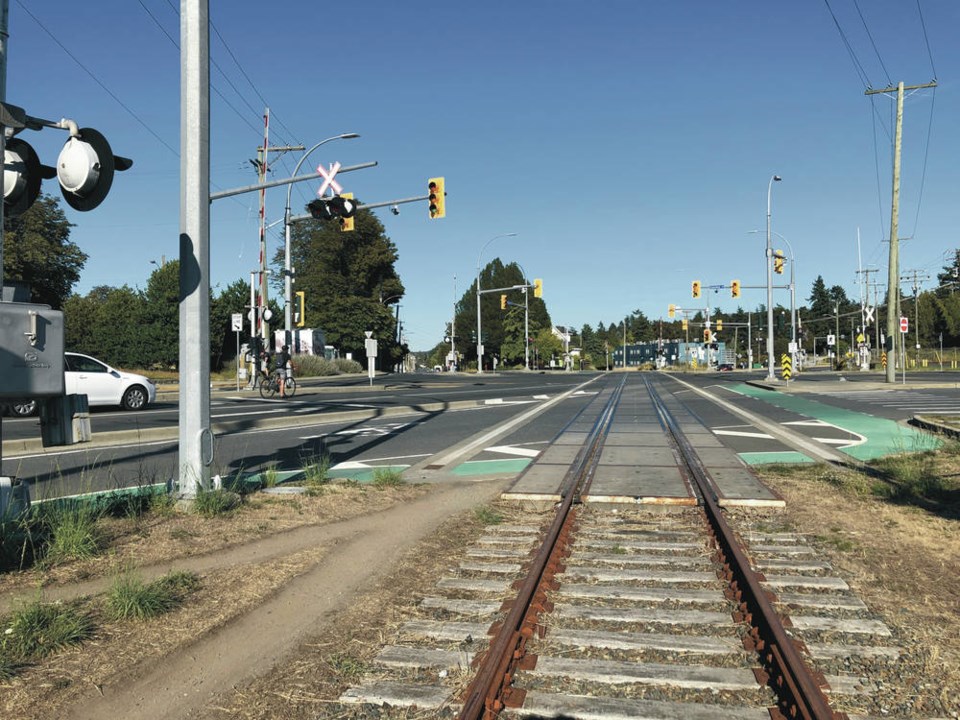A commentary by the co-chairs of the Island Corridor Foundation.
Many Vancouver Island residents dream of the train running again, and the Island Corridor Foundation was put in place to do exactly that.
Re: “Stop dreaming about returning trains to E&N corridor,” April 29 — we have had many discussions over the years with Denise Savoie and her advocacy group regarding their dream of ripping up the tracks and turning the rail corridor into a trail.
The ICF supports trails on the corridor and believe rails and trails can co-exist, as evidenced by more than 100 kilometres of trail that have been developed on the corridor already.
We have invited Savoie to work with us, on more than one occasion, to further develop our trail network.
However, she is unwilling to accept anything but the complete removal of the track, and with it, any potential for rail service on the Island.
While we respect that Savoie has a different vision for the corridor, it is not a vision we can agree with.
Savoie’s vision would place limits on its use to only those physically capable to use trails. It will leave behind many Island residents, like anyone who has significant distances to commute — for example, those living in Duncan who need to get to Nanaimo, workers living in Shawinigan Lake who need to get to jobs on the waterfront in Victoria, or those who need to travel for medical reasons.
Many Island families need reasonable transportation options to stay connected to one another. The corridor exists for the benefit of all Islanders and must be used accordingly.
Savoie sets out to demonstrate that rail is too expensive, it cannot compete with buses on the highway and that all our needs can be met with buses.
To do that she turns to the South Island Transportation Study — a report that most agree falls well short of what is required to address concerns over traffic, commute times and modal shift, and provides no clear goals or timelines to address any of these issues.
The report reviewed rail and used cost estimates that include $595 million for a commuter system that was over-designed and is far more than is needed today.
It includes a premium regional rail service that is not matched to the needs of the Island. Further, the baseline costs in the study were inflated by 97 per cent for contingencies, effectively doubling the actual costs.
A more realistic cost, as outlined in the assessment, with service to the entire Island matched to our needs, is about $350 million.
The corridor between Nanaimo and Victoria accounts for just over $100 million, or about the same cost as the McKenzie Interchange in Saanich. That would bring commuter rail service to the Victoria-Westhills corridor as well as regional service between Nanaimo and Victoria.
In Savoie’s opinion, it is not sensible to invest in rail, saying it cannot compete with the much cheaper, subsidized, express bus option.
This is not about competing with buses. This is about building an efficient and integrated transportation network that includes every available option, including buses, trains, ferries and active transportation.
It’s about getting people out of their cars and reducing our greenhouse gas emissions. It’s about reducing the growing congestion on our highways.
The province is estimating that by 2038 we can expect to spend 2.5 hours in a car, or on a bus, to get from Mill Bay to Victoria. A trail on the corridor will not alleviate this problem.
We would suggest an investment in rail is about the most sensible investment we could make for the Island.
Savoie takes issue with the Capital Regional District transportation committee’s decision to make rail a priority for the region and infers this was a decision made with little thought. The 13 mayors of the CRD put their support behind rail in a letter to the premier in 2019. Support certainly was not “thrown in,” as Savoie suggests.
Finally, Savoie states that some elected officials have a “line of thinking that if the rail service function of the corridor is set aside, then the continuity of the corridor will be lost.”
This is more than a line of thinking. It is a reality.
The B.C. Supreme Court in the Snaw-naw-as case has ruled on this issue, as the rail line passes through reserve land, and was clear that should the corridor be used for non-railway purposes the court could declare the right-of-way extinguished.
That means the corridor cannot be used as a bus lane or as a trail and any attempt to do so would result in the demise of the corridor. The CRD should be congratulated on taking steps that will protect the corridor, not just for the CRD, but for the whole Island.
Savoie is correct in her assertion that the corridor represents an incredible opportunity to think differently.
It is time to stop talking about returning rail service to the Island and have the B.C. government help fund the railway as they have committed to in the past … and get it done.



